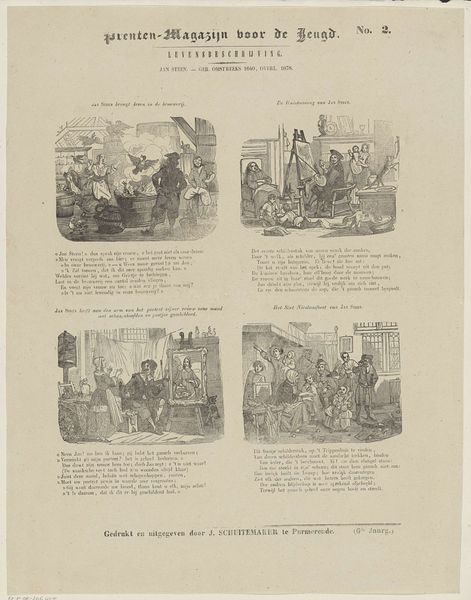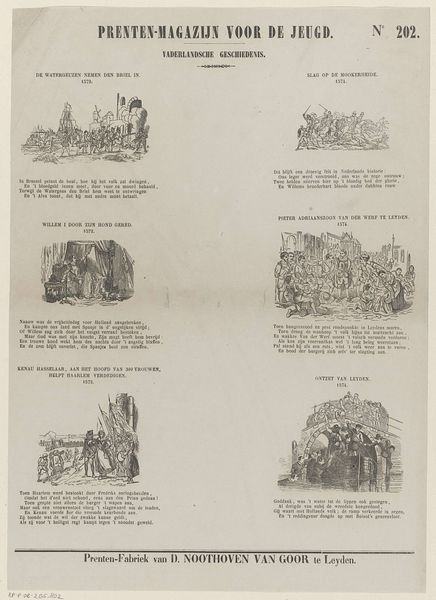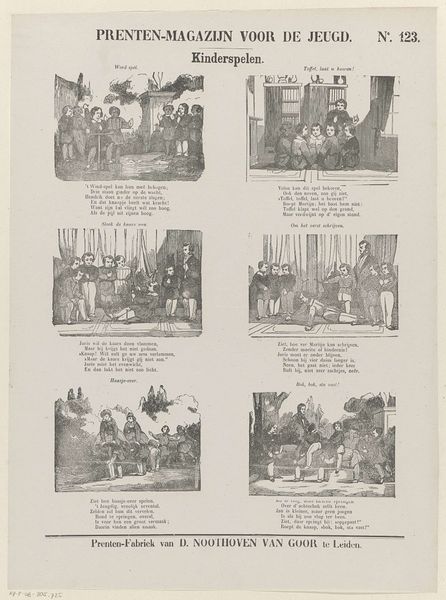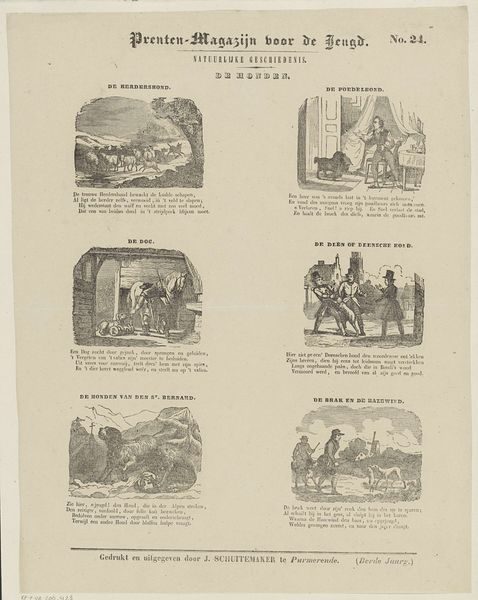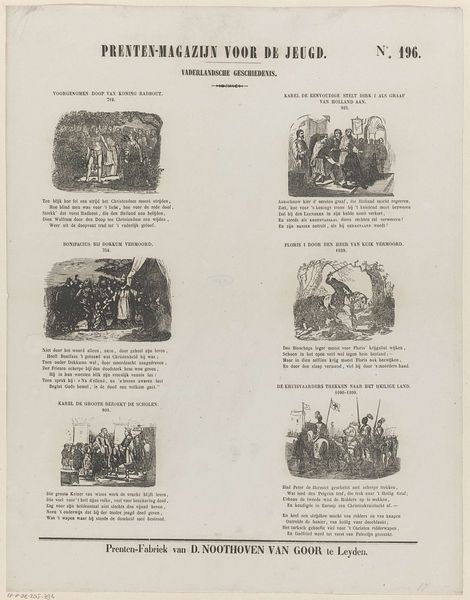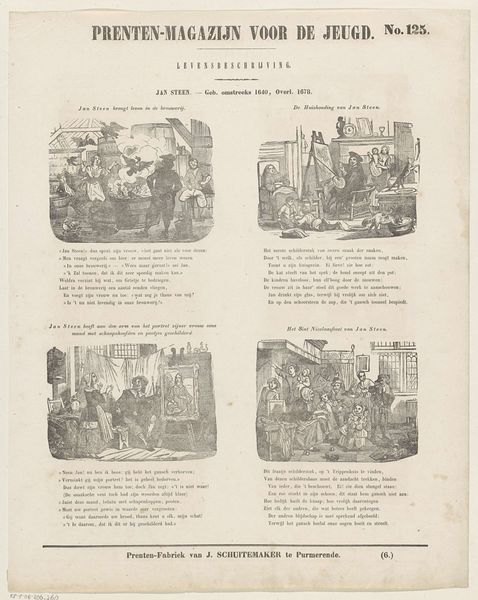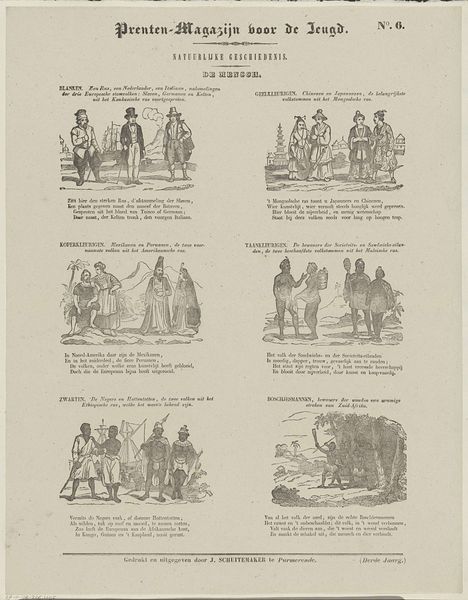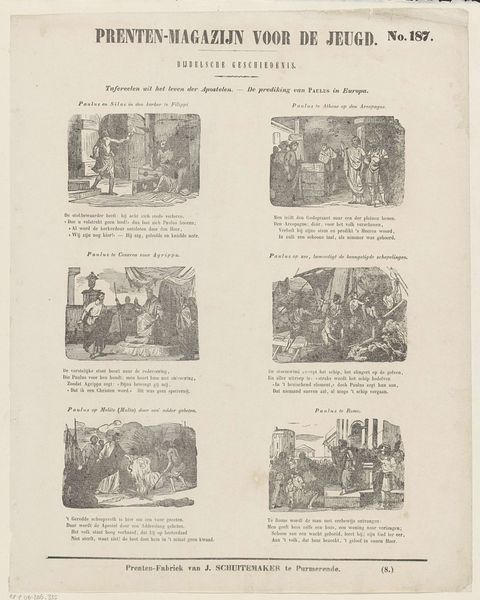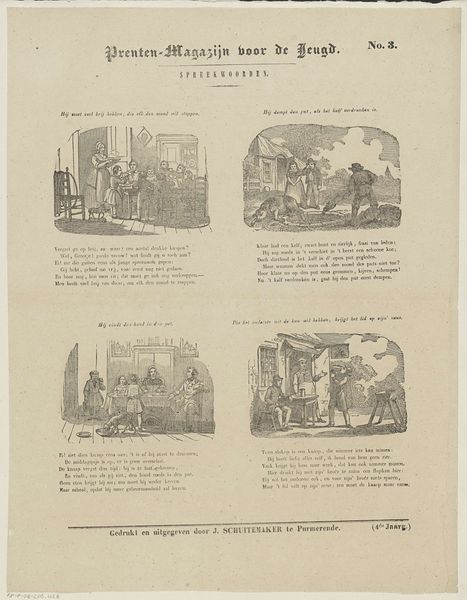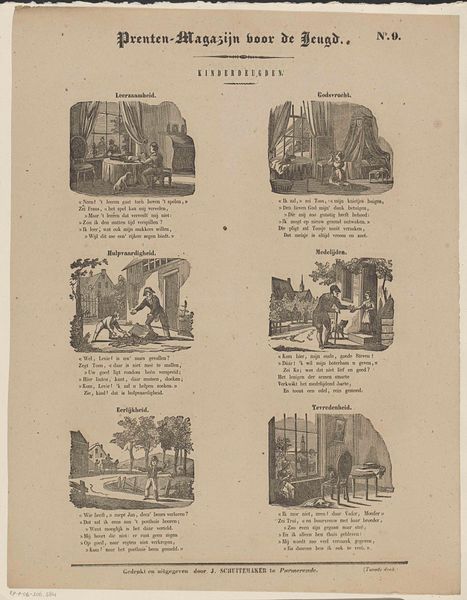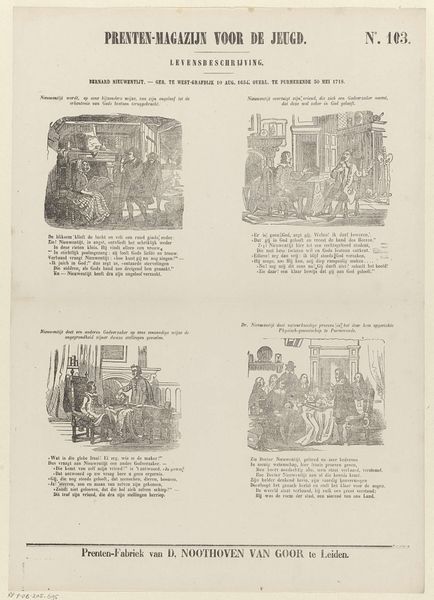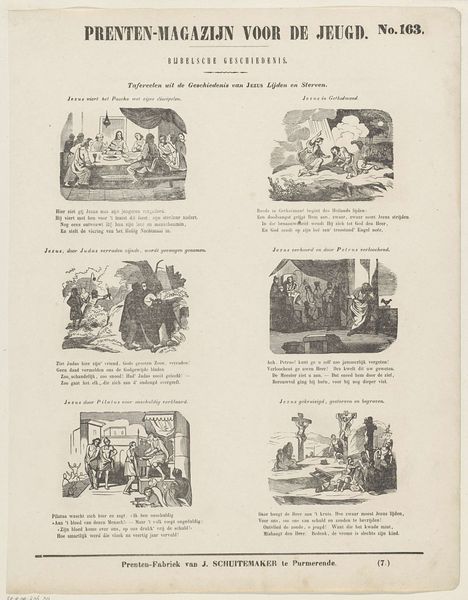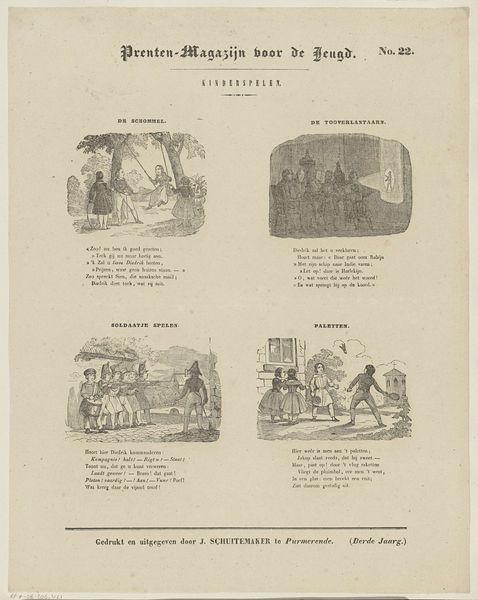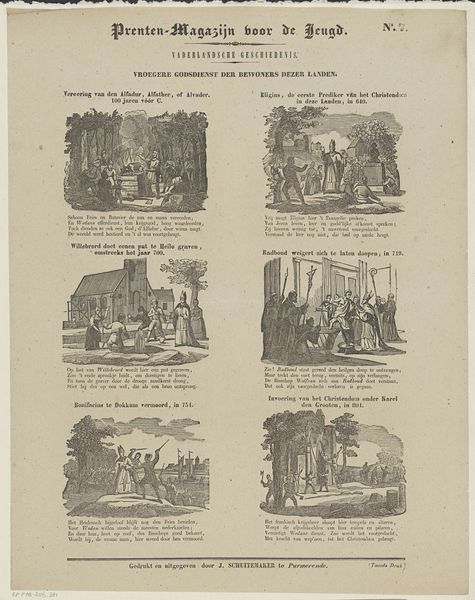
print, woodcut
#
dutch-golden-age
# print
#
woodcut
#
genre-painting
Dimensions: height 422 mm, width 342 mm
Copyright: Rijks Museum: Open Domain
Editor: So, this print is called "Kinderspelen," made in 1847 by Jan Schuitemaker. It seems like a page from a children's magazine, showing scenes of kids playing different games. It’s fascinating to see what childhood looked like then, though the adult supervision is notable in each frame. What does this print tell us about society at the time it was made? Curator: It's less about childhood and more about how society *wanted* childhood to be perceived. Look closely—these scenes, printed in "Prenten-Magazijn voor de Jeugd" (Magazine for Youth), were about constructing an ideal. Note the presence of adult figures, always seemingly guiding or observing. It hints at a rising middle class with increased concern for structured education and moral development, something very particular to Dutch Golden Age ideals percolating through the 19th century. Do you see a narrative being presented? Editor: Definitely, the adults seem like authority figures, but in a subtle, guiding way. It makes me think about how ideas of childhood innocence were being shaped and promoted. But were these games actually played or more symbolic? Curator: Good question! It is tricky to say for certain which specific games might have been fabricated and which reflect children's common lived realities at the time. Genre scenes such as these often romanticize daily life but consider the purpose of this magazine. It was didactic – meant to teach, not merely reflect. Schuitemaker, publishing in Purmerende, sought to instil certain values of order, piety, and regulated fun to this Dutch youth through visual example. That, perhaps, informs the stylized or overly-managed look we are seeing, wouldn't you agree? Editor: I do agree. It shows how the image of children's play could be used as a tool to instill values and social norms. So, looking at this “children’s magazine” as social instruction completely changes my understanding of its playful facade. Curator: Precisely. It helps us unpack the cultural anxieties and aspirations of that era through an accessible visual medium aimed at the young and impressionable.
Comments
No comments
Be the first to comment and join the conversation on the ultimate creative platform.
